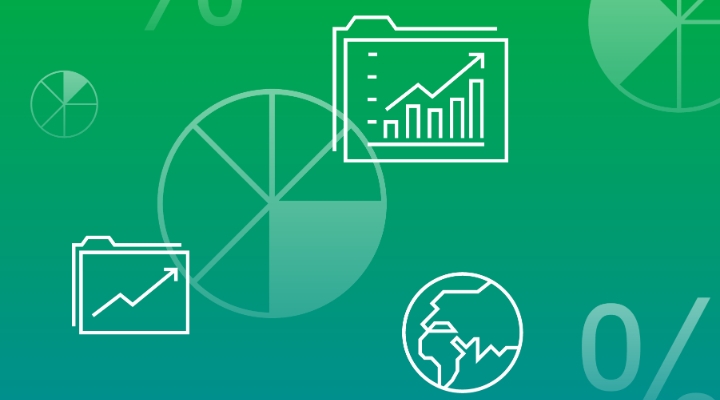
One way to clear up some of the confusion surrounding environmental, social, and governance investing is to distinguish between ESG as process and ESG as product.
ESG as Process
Let’s start with ESG as process. Investors use ESG information and analysis in their investment processes to help them understand risks and opportunities that may be material but are not well illuminated by financial-statement-based analysis alone. Corporations have been doing the same thing.
ESG is literally information, in the form of data and ratings, about environmental, social, and corporate governance challenges that may affect an investment decision. It is an input to the investment process. ESG analysis is the interpretation of that information as part of the investment decision-making process. Similarly for companies, ESG analysis informs the capital-allocation process.
The use of ESG information and analysis within the investment process has become widespread practice among asset managers globally. Why? Because adding this kind of information to the investment process provides investors with a more complete view of a company. This is especially relevant in a time when the typical large corporation has more intangible than tangible assets on its balance sheet, and pressing issues like climate change (especially), natural-resource limits, competition for talent, and perceptions of a firm’s broader impact on the world can have material ramifications.
The rationale for ESG as first articulated by a group of investors in 2005 holds up pretty well nearly two decades later:
“In a more globalised, interconnected, and competitive world, the way that environmental, social, and corporate governance issues are managed is a key part of companies’ overall management quality that’s necessary to compete successfully.
“Companies that perform better with regard to ESG issues can increase shareholder value by, for example, properly managing risks, anticipating regulatory action, or accessing new markets, while at the same time contributing to the sustainable development of the societies in which they operate. Moreover, these issues can have a strong impact on reputation and brands, an increasingly important part of company value.”
To be sure, there is no single “correct” way to use ESG information, and so we see considerable variation across asset managers in how they integrate ESG into their processes. Virtually all focus on what they consider to be financially material ESG issues, which can vary by industry and company.
ESG analysis is also increasingly guiding asset managers in their direct engagements with companies they invest in and in their proxy voting. Some take a traditional approach, focusing on getting companies to mitigate their ESG-related risks or take advantage of ESG-related opportunities. Others take a broader “systems-level” approach, engaging companies today about how they can help mitigate global systemic risks like climate change and economic inequality that could have negative outcomes for investors in the future. By doing this now, asset managers can help ensure durable risk-adjusted returns for investors over the long term.
In sum, ESG as process is about using ESG information and analysis to better understand investment risks and opportunities in a complex world both now and over the long term. It is not a matter of politics or values, it is about asset managers fulfilling their fiduciary responsibility toward their clients, including pension plans and everyday fund investors.
ESG as Product
By contrast, ESG as product refers to ESG funds, which have multiplied in recent years and gathered trillions in assets globally.
To make the distinction a little more clear, I’ll refer to these as “sustainable” funds. These are funds with the twin objectives of generating a competitive return and taking into consideration their broader impact on ESG issues. Some of these funds simply seek to minimize negative impacts, but many others seek to create positive impacts on people and planet.
Sustainable funds are not all alike. They employ a range of approaches to achieve their twin objectives:
- Identify material risks and opportunities. It isn’t surprising, given our discussion of ESG as process, that most sustainable funds use ESG information and analysis to do this. Unlike the many traditional funds that now incorporate some consideration of ESG in their process, usually focusing on risk mitigation, sustainable funds typically give ESG criteria a more central role, helping them avoid ESG “laggards” and emphasize ESG “leaders.”
- Avoid exposure to products or industries with negative impacts. Many sustainable funds use exclusions to do this. Examples include tobacco, guns, and coal, but there are a lot of others and no standard list of exclusions. Some sustainable funds are completely fossil fuel-free, but certainly not all.
- Emphasize sustainability themes. Sustainable funds seek out companies that make products or provide services that will contribute to the transition to a green economy or that address other issues like gender equality or affordable housing.
- Prioritize the positive impacts of their holdings. There is some overlap here with thematic investing, but as impact data on companies is becoming more widely available, some sustainable funds are assessing the positive impact of their holdings. Sustainable bond funds are investing in green bonds and other sustainability-related bonds that will finance climate change mitigation or adaptation, or other positive societal outcomes. Sustainable funds are also evaluating their overall impact and reporting back to investors.
- Focus on their active ownership around ESG issues. This includes direct engagement with companies, sponsoring shareholder resolutions, and proxy voting. This, too, should be considered an example of the positive impact a sustainable fund can create.
Some sustainable funds may be focused on just one of these approaches, but most feature some combination of them, or all of them. In addition, sustainable funds use traditional financial criteria, which varies from fund to fund. Some are growth-oriented, while others (not as many) lean toward value. They have different valuation disciplines and sell criteria. Some are actively managed, and some are index funds. Among the latter, there is also considerable variation in how underlying ESG indexes are constructed.
That leaves us with three takeaways. First, to clarify your understanding of ESG, it’s helpful to distinguish between ESG as process and ESG as product. Second, virtually all asset managers use ESG as process to help them fulfill their fiduciary responsibilities. And finally, although ESG products, or sustainable funds, are not all alike in terms of their sustainability or financial approaches, they share the common objectives of competitive returns while considering the broader impact on people and planet.






.jpg)













